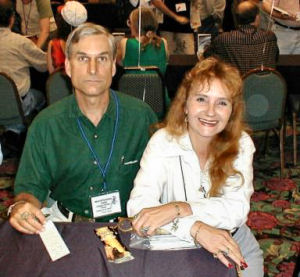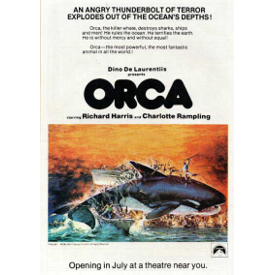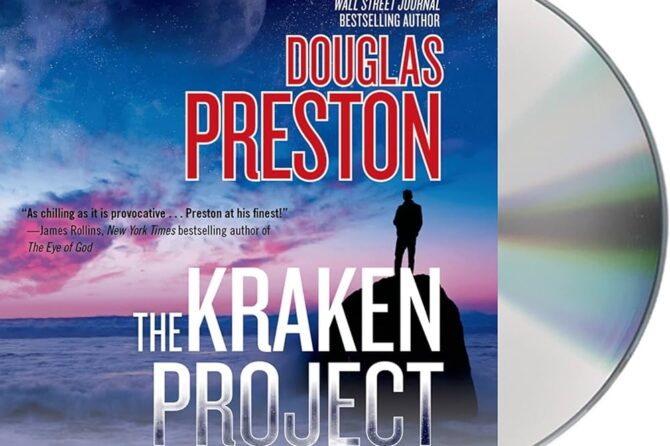“Little ditty ‘bout Billie Sue and Dean
Two American kids writing in the thriller scene…”
Sorry, couldn’t resist. Of course, neither one of the above-mentioned writers is a “kid” any more; both are—like me (since Billie Sue is my age and Dean is two years older)—approaching middle age (Hey, didn’t you know? 60 is the new 30!). But the two names in juxtaposition kind of made this column sound like a song by John Mellencamp or Bruce Springsteen or even “Take the Money and Run” by Steve Miller (“This here’s a story about Billy Joe and Bobbie Sue….”), so I decided to make my lead-in a silly one, even though the column’s not (I hope!) a silly column.

I’m referring here to the two thriller writers Billie Sue Mosiman and Dean R. Koontz; I have the pleasure of knowing both writers slightly, though I’ve never met either one face-to-face. (I’ll explain all that later.) Billie Sue says her first book was published in 1984, I believe; and Dean Koontz’s first came out in 1968, according to Wikipedia. They both write or have written thrillers, mysteries, science fiction and fantasy—the latter involving vampires and even more esoteric ideas. She’s been nominated for both Edgar and Stoker awards; he’s been nominated multiple times for the Hugo, the Locus award, the Stoker, Prometheus and BFA awards.
To look at her, Billie Sue (Figure 1) looks like a typical Southern belle (born someplace like Mobile, Alabama, I think) with no more concerns than the cotillion and whether there’s enough Spanish Moss on the oak trees adorning the plantation house… okay, I’m being silly again—I know those sorts of Southern belles went out about the time the carpetbaggers invaded the Deep South after the War of Northern Agression, as some call it. Although she lives in Texas (or Alabama, I’m never quite sure) with her husband Lyle, I don’t think they can afford a plantation or would want one if they could. And probably the cotillion would be the last thing on her mind—unless as a setting for a massacre; she’s been a full-time writer for years, and her favourite genres are (surprise!) thrillers and horror/fantasy, at least judging by what she’s been publishing lately. The first book of hers I read was called Wireman, about a singular serial killer who used piano wire to garrote his victims. And she looks so normal!
As a writer myself, I’ve always valued advice from other writers—especially published ones—and I was glad, back in 1997 or so, to get in touch with Billie Sue on CompuServe or another one of those forums online. We corresponded pretty frequently, along with the other members of the writing forum. And then, a couple of years ago, I was ecstatic to find her on Facebook and to reconnect with her. And now she has put her entire back catalog on Amazon.com (and .ca) as Kindle books, so I’ve been happily buying them as I could afford them; actually, they’re all reasonably priced. I bought her latest paperback, called The Grey Matter, which I’ll review in a later column, and her latest Kindle book, called Sinister—Tales of Dread 2014, which is only $3.99 US at the moment!

(Not to digress, but you do know there are Kindle apps for Android, IOS as well as PC, don’t you? I know some of you have a prejudice against reading on a computer device of any kind, but those who don’t will find a whole bunch of great reading at a reasonable cost. Jus’ sayin’, folks.)

Anyway, Sinister—Tales of Dread 2014 is a follow-up of sorts to Sinister—Tales of Dread 2013, which came out (surprise!) in 2013. According to the author, she writes about fourteen or fifteen short stories a year, and is going to do a yearly anthology of them. This would be the second one. The cover is by Jeffrey Kosh, by the way. It comprises thirteen stories of terror, horror and alternate history to name just a few. The main characters, whether heroes or anti-heroes, are mostly women. The Table of Contents lists the following tales:
The Neon Night
The Long Lonely Empty Road
These Old Hands
The Mask
She’s a Winner
Sleep No More
Ye Who Enter Here, Be Damned
Edge of the Modern World
Deadly Son
Tsunami
Hiding the Truth
Star-sparkled Night in Texas
The Enforcer
Because I have a long-standing rule against spoilers, I can’t go into great detail about some of what’s in these stories, but I’ll tell you what I can. Most of these stories have appeared elsewhere; as far as I know, four are original to this anthology.
The first story, The Neon Night, sets the tone; it’s a chilling story of what can happen to a young woman—girl, really—left alone in the Big City while her uncaring parents go out for a night of clubbing. And it’s probably not what you would expect from the opening (a common thread in Billie Sue’s fiction).
The Long Lonely Empty Road is a tale of a woman who seems to have the world by the tail; self-possessed from a young age, she gets what she wants because she’s smart, beautiful and focussed. She gets into unexpected trouble when her car dies on the way to a new job in Las Vegas and finds a rescuer. Or does she?
These Old Hands is a pure SF tale of a world-wide epidemic that comes from an unexpected place with an unexpected purpose.
The Mask is horror fantasy with a psychological edge. Are these things happening to the protagonistor or are they fantasies of a mind teetering on the edge?
She’s a Winner is the story of a different kind of self-possessed woman, who decides when she is very young that she wants what she wants, and no person will take it from her or dissuade her from her course. Can she hold to that when push comes to shove?
Sleep No More is about a young woman who falls in with evil companions, so to speak. Which is stronger, self-preservation or love?
Ye Who Enter Here… is a cautionary tale about vampires. Who is stronger, the older or the younger?
Edge of the Modern World is original to this anthology; it’s a look at whether it’s good to have the newest technology or not. Is that new phone app all it’s cracked up to be?
Deadly Son is an alternate-history story, combining parts of the Bible and actual history into the tale of a Solomon who, while as strong as Samson, perhaps wasn’t as wise as the Solomon in the Bible.
Tsunami tells us that perhaps emotions are like forces of nature; they can’t always be predicted or avoided, and sometimes sweep everything before them.
Hiding the Truth is another original story for this volume; Sheila’s one of the most in-demand actresses in Hollywood, but the fame and demands on her have driven her from the spotlight. Maybe India wasn’t the best place to try to get away, though.
Star-Sparkled Night… is a wistful little tale of an old woman who’s losing it, they all say. She just isn’t right in the head. But maybe there’s more to her than they think.
The Enforcer: She used to be “May The Enforcer”; as an undercover agent she’d killed many times in the service of her country. But now she was happily retired and untraceable. Or was she?
Not all the stories here are gems; a couple I found—and I won’t say which—a bit weak story-wise. The situations are all pretty well delineated; you won’t catch Billie Sue with a weak description—and for a short story, that’s important; you don’t have the time or space for an “expository lump,” so descriptions have to be integrated into the story flow. The characters are likewise pretty much all well described without exposition too. There are one or two places where it all just didn’t add up in my mind, but your mileage may vary. Overall, though, I liked this book and, for $3.99 US, you simply can’t lose if you’re a lover of F/SF/Horror/Thrillers. Go. Buy!
Dean Koontz, as I said, has been selling books since 1968; I don’t know—and am too lazy to count—exactly how many he’s written. He’s been on multiple best-seller lists (like the New York Times one) and had ten or more movies made from his books; some of those movies were actually good! (I thought the most recent one, Odd John, was rather “blah,” but Intensity was, in my opinion, very good, as were Phantoms and Sole Survivor. One of his best-known, Demon Seed, was kind of silly in my estimation, but it was very successful (possibly because of Julie Christie…).

His newest book (Figure 5; hardcover shown, but I believe the paperback has the same cover) is called Innocence. Like all his books, it’s really well written, but it has one fatal flaw, which I can’t discuss more than in general terms, because that would involve spoilers, and I’m not going to go there. I have corresponded once or twice with Dean by fax, as he hasn’t—unless recently—been willing to do email, and has printed his P.O. Box number in the back of most of his books so that readers can correspond with him. We shared a mutual friend, Jerry Sohl, until Jerry died some years ago.
Back in about 1990, Dean realized that he was going bald and (in his words, looked like G. Gordon Liddy) quickly shaved off his mustache and got a hair transplant. It did make him look younger, but I think it also marked a change in the kinds of books he was writing. He’s been well known for thrillers—both psychological (Intensity) as well as science-fictional (Demon Seed, Watchers); like Stephen King, he’s known as a “horror” writer, but for the most part, his books have had an underlying scientific (even if it’s a bogus scientific) premise and don’t rely too much on supernatural forces; but since the ’90s, more supernatural stuff has crept in.
Of course, if you’re familiar with his Odd John books (or the graphic novels and the recent movie made of same) you’ll know that there’s no scientific explanation for either Odd John’s clairvoyance—his “speaking with the dead” or the entities that wreak havoc in his world. But aside from those, and a recent tendency to idolize and practically sanctify dogs, his fiction has been firmly grounded in—as much as any thriller can be—reality; at least he has tried to bring in some sort of science to justify (as in the Moonlight Bay books) the odd influences in the stories.
In Innocence, we are introduced to Addison, who is some kind of freak, or abomination—when normal people see him, they immediately want to kill him. His own mother (his father had left years before) threw him out of her house when he was eight, and then committed suicide by shotgun; the nurse had tried to kill him when he was born. Alone, starving and afraid, he hid under a tarp on a truck and was taken to a city (It appears to be Los Angeles, though it may be a made-up city. There’s a reference to a “St. Saturnius,” where I can only find a “St. Saturninus” in Google.) where he met a man with the same affliction, who raised him thereafter.

From then on, Addison and his father spend most of their lives underground in a forgotten bunker in the sewers of the city, coming above-ground only when there is a storm, either rain or snow, that will keep most of the city’s inhabitants inside. His adoptive father is killed some years later by a couple of policemen during a snowstorm. Addison has a storm drain “key” and can acess many of the city’s buildings through their drains.
Later, Addison meets a young woman named Gwyneth, after hours, in a museum where he sees her being threatened by a man; Addison shows her how to escape the museum through the drains; his face hidden by a hoodie and a mask, he doesn’t let Gwyneth see who or what he is. She is likewise hidden by Goth makeup; she has a nose ring and a red bead through her lower lip in addition to the traditional Goth makeup and black hair. Addison has an aversion to being seen—afraid that he will lose what friendship is growing between them—and she has an aversion to being touched. As a very rich orphan who has been hidden in a series of safe houses, she has been pursued by the man who killed her father; she is afraid he is now privy to the secrets of her safe houses, and she and Addison must find new ways to stay hidden.
There are other factors in play here, too—there’s a supernatural element involving mysterious “Fogs” and “Clears” that apparently only Addison can see; the Fogs are evil and are associated with evil persons, while the Clears appear to be the opposite.
Like most of his books, Koontz describes the people, settings and situations beautifully; he also uses them to provide his commentary on things that he likes or dislikes. For example, “During the first half of the nineteenth century, the city rang with more harmonies than discords, and everywhere there were things to please the eye. But during decades when the government turned to expert planners, much of the past was considered déclassé, if not abhorrent. Architecture that raised in the mind an appreciation of history was deemed embarrassing because much of that history was considered unfortunate, if not shameful. No place could be made for that which was quaint or charming or noble. Anything that might be seen as the work of sentimental primitives was torn down and replaced by massive buildings seemingly inspired by Soviet apartment blocks and by forests of steel-and-glass office towers that blazed in daylight as if they were more glorious than the sun that shed it.”
Those sorts of comments, slipped into the narrative, make Koontz’s books well worth reading—that is, if you agree with him, which I do—but this book, while great up to the last quarter or so, has a fatal flaw, and that is the ending. The last chapter, which I would love to discuss but can’t, without massive spoilers, is perhaps some kind of a religious symbolism that is totally out of place (in my opinion) in a book of this type. Mind you, Koontz has been groping towards this kind of thing for years; it’s only now that he has ruined—again, in my opinon—what came before in the book because of it. Either that, or he has taken up drug use and wrote the last chapter while high as a kite. You decide. I can only say that I’m terribly disappointed with the ending. I expected more of him, and will have to evaluate whether I want to spend any more money on new Koontz hardcovers, given the price of hardcovers today.
AUTHOR’S NOTE: WOTTA NIDIOT! I’m reminded by Susan Darling, friend of Billie Sue, that it’s Odd THOMAS, not Odd John! I knew that, just as I knew Olaf Stapledon wrote Odd John! Fingers often move ahead of brain, I’m afraid. My apologies to my readers, and thanks to Susan!
Comments are welcome on this week’s column. You can comment here, or on my Facebook page, or in the several Facebook groups where I publish a link to this column. I might not agree with what you say, but you’re all welcome to respond, rebut or correct me. Don’t feel you have to agree with me to post a comment; my opinion is, as always, my own, and doesn’t necessarily reflect the views of Amazing Stories or its owners, editors, publishers or other bloggers. See you next week!










